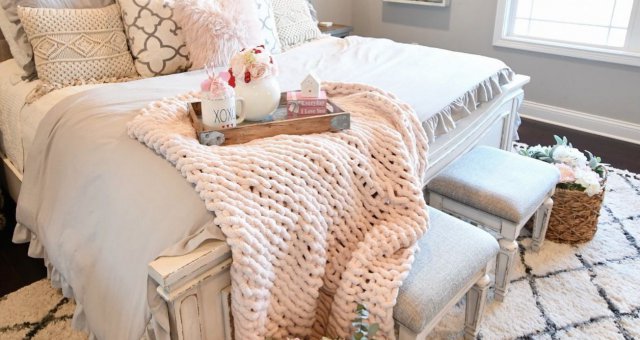The first challenge in making a charcuterie board is learning how to properly pronounce the word itself. “Charcuterie” is the French word for delicatessen, but it more specifically refers to cured and aged meat products sold in those shops. Everything from salami to high-end Iberico ham can fall into this category of delightful treats. Once you’ve sorted your vowels, it’s time to move on to fun charcuterie board tips. Unlike other dishes designed to serve to a group, a charcuterie board is far from fixed in its composition. Each arrangement you make can be completely unique, giving you a chance to polish your skills while enjoying delicious snacks. Putting together a few small charcuterie boards for yourself first is a good way to get comfortable with your charcuterie assembly and cookware. This way, you’ll get to know which flavor combinations work well together and think up new ideas as you sample your tasty creations. Don’t stress yourself by trying to plan your very first board when a big party is coming up. Instead, invite a few friends over for your early experiments if you need an audience to bounce your charcuterie board ideas off of.
What Is a Charcuterie Board?
Any plate or tray covered in an assortment of cured meats is technically a charcuterie board. However, the phrase has taken on a much larger meaning today than the basic cold-cut trays of yesterday. Modern charcuterie boards tend to pair salty or cured meats with a wide range of other finger foods that balance out their intense flavors. This encourages guests to browse as they wish and experiment with new combinations each time they reach for a snack. With many finger foods pre-assembled before a big event, charcuterie boards not only respect each guest’s flavor preferences, but they’re also a lot less work to make. Charcuteries are mostly put together for parties and gatherings where finger foods will encourage mingling. Still, they can also serve as a great impromptu dinner for your family when no one feels like cooking. Even if you plan to eat everything with your hands, it’s smart to place some themed cutlery by the side of the board for dips and spreads.
What to Put on a Charcuterie Board
The question of what goes on a charcuterie board is largely a personal one. As long as your arrangement of finger foods includes charcuterie and the crackers or cheeses to accompany them, you can accurately refer to your arrangement as a charcuterie board. There’s no minimum amount of meat required to use the term, although boards without any meat are better referred to as cheese boards or plates. In general, you’ll find a combination of cured meats, hard and soft cheeses, dips and spreads, shelled nuts, fresh and dried fruit, cut-up vegetables, and crackers. Other popular additions include olives, pickles, pates, and practically anything else you might like to eat with cured meat or crackers.
Charcuterie Board Meats
All of the best charcuterie board ideas start with the meats themselves. Choose anywhere from two to five types of cured, smoked, or aged meats. Popular forms of charcuterie include:
- Salami
- Pepperoni
- Cured or baked ham
- Summer sausage
- Prosciutto
- Mortadella
- Sopressata
- Spanish chorizo
- Any other sausages that are eaten without cooking.
Once you’ve picked a few types of meat, you have a general flavor profile to work around.
Easy Charcuterie Board Recipes You Can Whip Up in a Flash
One of the simplest charcuterie board recipes is based on nothing more than the pepperoni and salami you can find at any grocery store. Arrange the circles in between layers of sliced cheeses and supply some buttery crackers that can stand up to stacking. This easy charcuterie board may sound basic, but it’s a great culinary foundation. Throw in those cornichons languishing in the back of the refrigerator and some hummus for an immediate upgrade. A sprig of rosemary and a cluster of grapes dress up the board without requiring more than a trip to the store. If you don’t have access to fancy cheese shops and delis that stock it all, you can still enjoy a charcuterie board based on anything that’s available.
Best Cheeses for a Charcuterie Board
Aside from the meat, it’s the cheese that tends to get the most attention on a charcuterie board. For a balanced approach to charcuterie board ingredients, try to have both soft and hard kinds of cheese on the board. You may need cheese knives for both spreading soft cheeses and cutting harder varieties, so consider tableware designed to match your board and kitchen. The very best cheese for charcuterie board arrangements will depend largely on the meats you choose. Balance out spicy or strong-flavored meats with milder and creamier cheeses. If you choose meats with less assertive flavors, pick up the slack with sharp or even smoked cheeses. Don’t forget a few kinds of cheese that pair well with the other snacks included on the board, such as sharp cheddar to go with apple slices or gouda for grapes.
How to Make a DIY Charcuterie Board
Most people rely on fancy serving platters and store-bought boards to lay out their charcuterie creations. If you have some woodworking skills, you may start wondering how to whittle a charcuterie board from scratch. It’s not too hard to make your very own wood charcuterie board if you start with a large hardwood board from a local lumber mill or hardware store. Fill in any holes or cracks with a food-safe wood stabilizer, then sand down the entire board and carve a handle if you so desire. Sealing the wood with a food-safe wax or oil product designed for protecting cutting boards will ensure it’s ready to use year after year.
Ashley has everything you need to perfect the art of the charcuterie board, including tables and sideboards for serving it on. Elevate your next party with the art of delicate finger foods by putting your own spin on the charcuterie classics.





